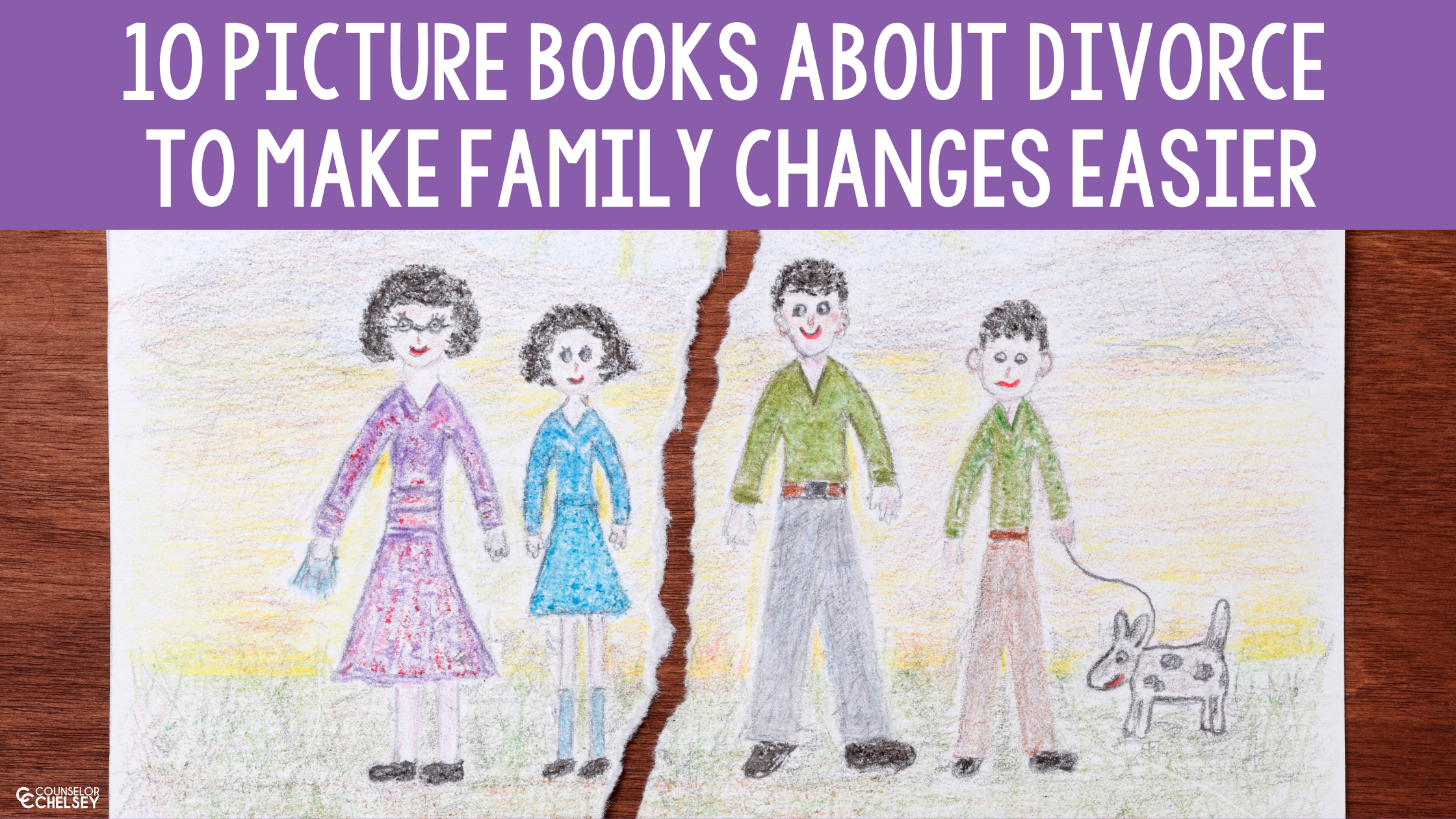10 Picture Books About Divorce To Make Family Changes Easier
Divorce can be hard for everyone, but especially for little hearts trying to make sense of it all. Whether a child is living in two homes or adjusting to new routines, it can be a time of stress and uncertainty.
These 10 picture books help explain separation in age-appropriate, compassionate ways while reminding kids that they are loved, safe, and not alone. They are great for educators, counselor or therapists, as well as families who are navigating a divorce or separation.
This post contains affiliate links. Please review my full disclosure policy for additional information.
i have two homes by marian de smet
Recommended Grades: Pre-K to 2
Nina explains what it is like living in two homes – one with her mom and one with her dad. Readers will relate to Nina’s honest experiences and see that living in two homes doesn’t always have to be bad!
mom and dad glue by kes gray
Recommended Grades: Pre-K to 2
In this book, a boy’s parents separate and he wants to glue them back together. He goes to the glue shop in search of the glue he needs. When he doesn’t find the right glue, the shop owner reminds him that he can’t glue his parents back together, and that he doesn’t have to because it isn’t his fault.
standing on my own two feet by tamara schmitz
Recommended Grades: Pre-K to 2
The main character of this book matter-of-factly explains his life with divorced parents. He reminds himself (and readers) that their divorce wasn’t because of him, and most importantly, that his parents will always love him!
when my parents forgot how to be friends by jennifer moore-mallinos
Recommended Grades: K to 3
This story describe the changes that happen when parents forget to be friends. Maybe your mom starts crying a lot or maybe your family doesn’t spend time together. Even though the change can be hard, it doesn’t mean you still can’t have fun with your family!
why do families change? by dr. jillian roberts
Recommended Grades: K to 3
This book answers questions that many children have about divorce. The engaging question and answer format will help kids address questions like, “Is this my fault?” and “How do I feel better?”
was it the chocolate pudding? by sandra levins
Recommended Grades: K to 3
The boy in this story thinks that his parents divorce was his fault – that it was caused by a mess he made with chocolate pudding. In the end, he is relieved to hear that it wasn’t his fault at all! Young readers will love how the boy explains everything in language that they will understand!
mabel’s topsy-turvy homes by candy wellins
Recommended Grades: K to 3
Mabel is having a hard time now that she has two houses. She doesn’t like that each house is different and there are different rules and expectations at each one. When she cares for Izzy the class Iguana and reflects on all of the adventures Izzy has had, she begins to see her own life as a fun adventure too.
fred stays with me by nancy coffelt
Recommended Grades: K to 3
The little girl in this story lives in two different houses - one with her mom and one with her dad. Her dog Fred always lives with her. The story shows that things are different in the two houses, but there are also many things that are the same, like Fred. This story encourages kids to remember that there are still constants in our lives even when some things are different.
monday, wednesday, and every other weekend by karen stanton
Recommended Grades: 1 to 4
Henry has two houses now, and so does his dog Pomegranate. Henry has things he likes at both houses, but Pomegranate just wants to go back to their old house. He runs away, and Henry shows him that now they have a new home!
do you remember by sydney smith
Recommended Grades: 2 to 4
A boy and his mom move to the city, leaving his dad and their old home behind. They spend time reflecting on the memories from their past, and talk about how they can make new memories in their new situation too.
Finding the right words to explain divorce to a child can be tough. These 10 picture books help kids understand family changes, while offering emotional support and reassurance.

















